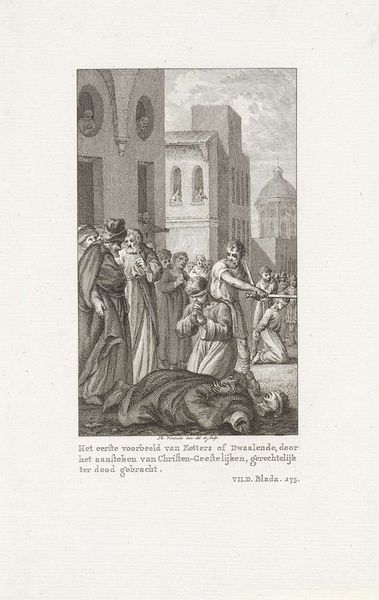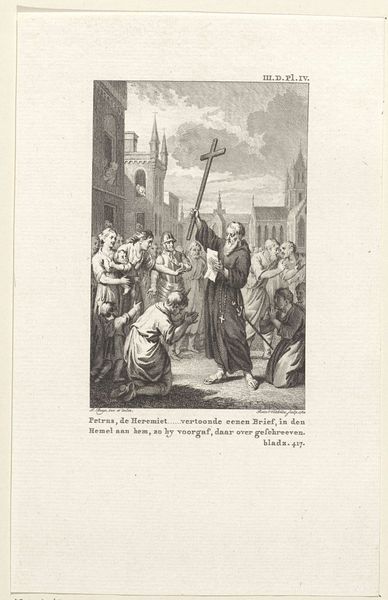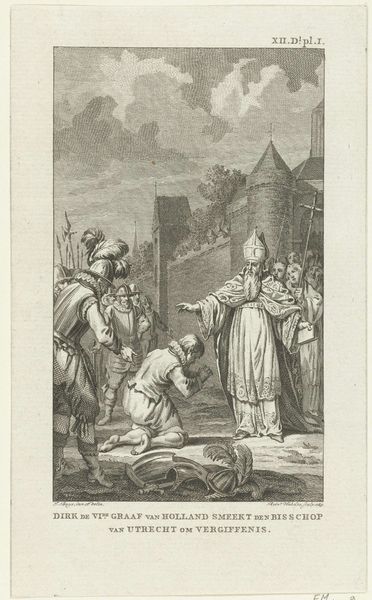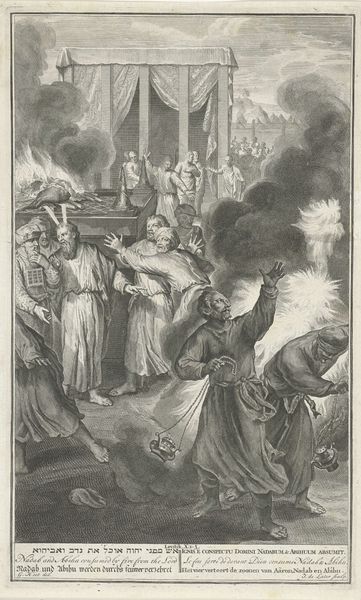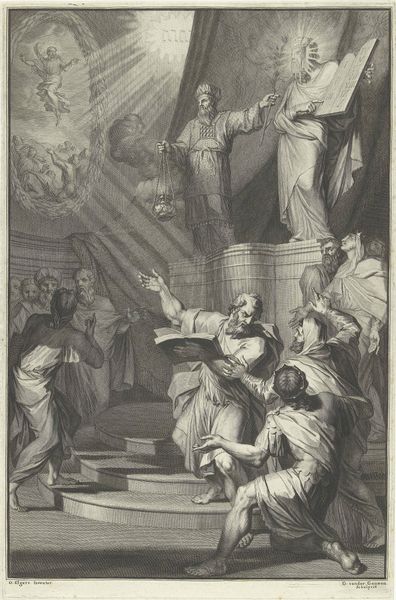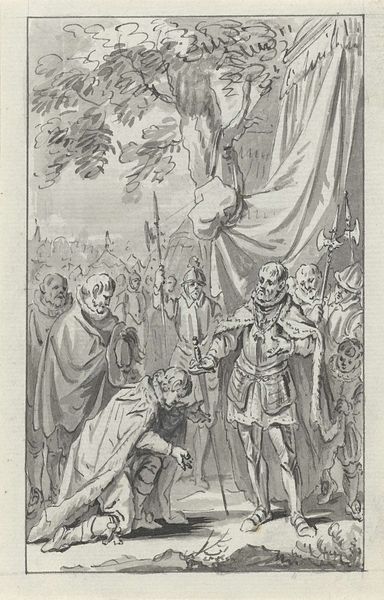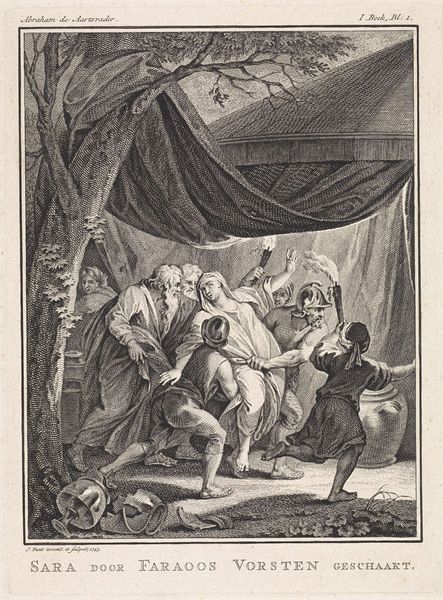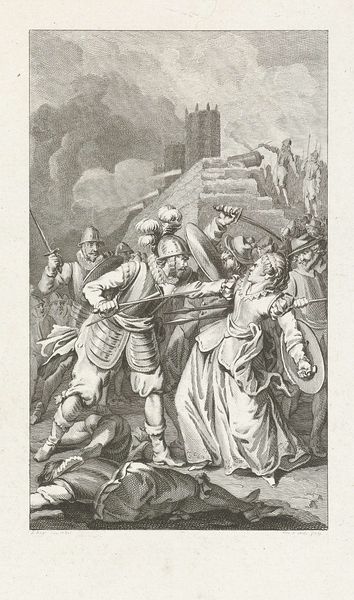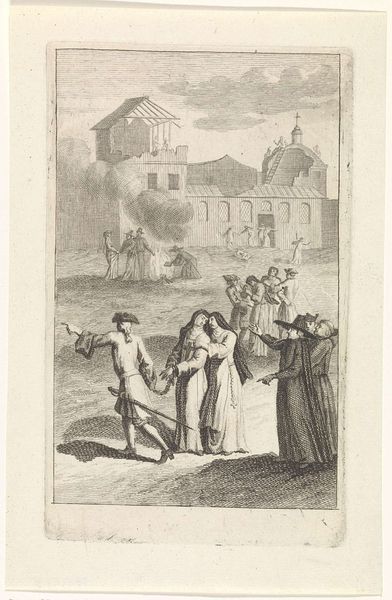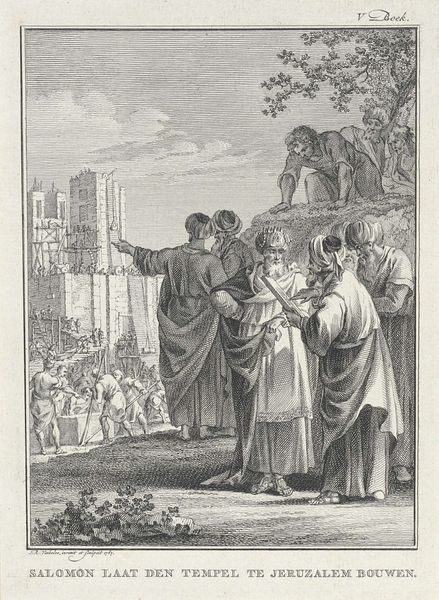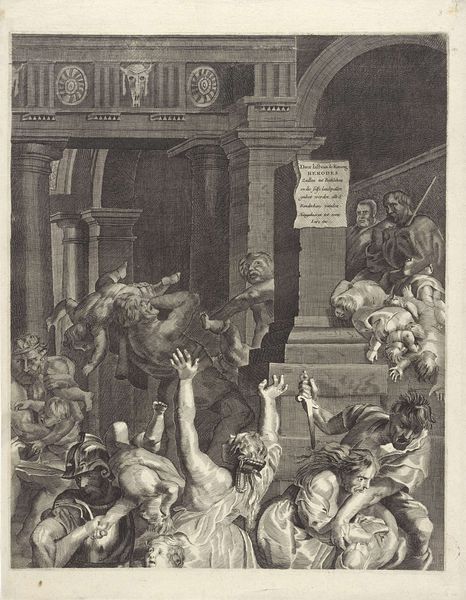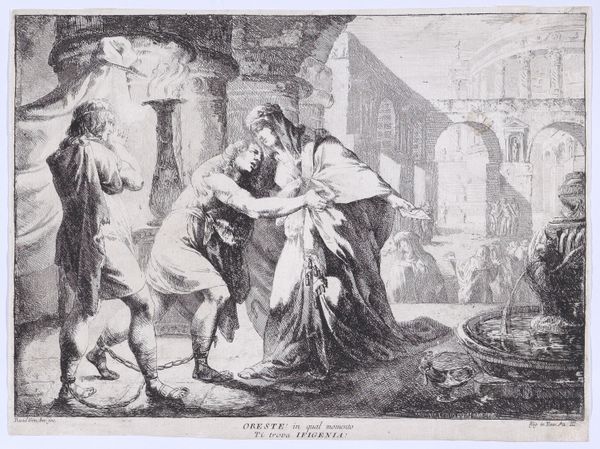
Dimensions: height 164 mm, width 105 mm
Copyright: Rijks Museum: Open Domain
Reinier Vinkeles created this print of ‘Martin Luther Burning the Papal Bull’ sometime before his death in 1816. It depicts an act of public defiance against the Catholic Church. Looking at this image, we should think about the conditions that made such a scene both possible and popular. The print was made in the Netherlands, a place with a strong Protestant tradition and a history of resistance to Catholic rule. The burning of the Papal Bull by Martin Luther in 1520 was a symbolic act of rebellion that marked a turning point in the Reformation. Vinkeles’s print shows Luther as a figure of popular resistance, bravely challenging the authority of the Pope. Prints like this one played an important role in shaping public opinion and spreading Protestant ideas. To better understand the print, we need to consider its role within the institutions of art, religion, and politics. By exploring these historical contexts, we can gain a deeper appreciation of the print's significance as a social and cultural document.
Comments
No comments
Be the first to comment and join the conversation on the ultimate creative platform.
